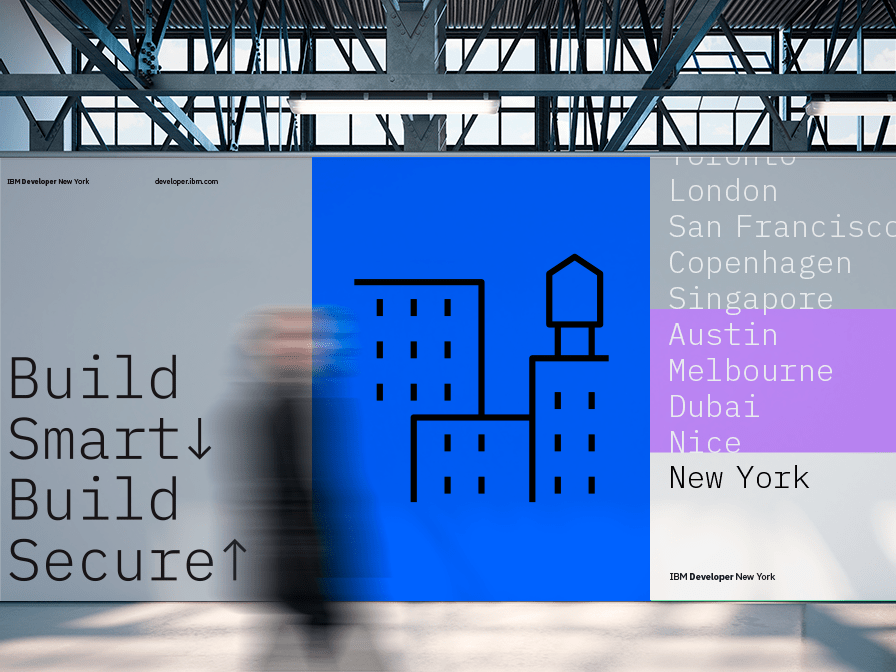Mono
Mono
Mono
IBM Plex® Mono styles
Summary
IBM Plex is the new open source corporate typeface for IBM. Designed in collaboration with Bold Monday it has been carefully tuned to meet the requirements for one of the largest technology companies in the world and to reflect IBM’s brand spirit, beliefs, and design principles. The new design of the typeface is rooted in the idea of man and machine, and borrows influences from sources such as the IBM logotype and historical typewriter typefaces. The balance of engineering versus design set the principles from which this design was born.
At this moment the IBM Plex family comprises sans-serif, serif, condensed, and monospace styles to serve a variety of needs across communications and digital experiences. The sans and the serif are the workhorse families and the monospaced is great for informal communication and for developers to code with. Each branch of the IBM Plex family comes in eight weights with italics.
In practice




↓
Various examples using IBM Plex Mono, including the think 2021 event identity and the IBM Developer identity.
Credit & details
Website
Download
Language & support
Afrikaans
Albanian
Asu
Azerbaijani
Bakhtiari
Balti
Balochi
Basque
Beja
Belarusian
Bemba
Bena
Bokmål
Bosnian
Brahui
Breton
Bru
Bulgarian
Catalan
Central Kurdish
Chiga
Chong
Comorian
Coptic
Cornish
Croatian
Czech
Danish
Dari
Deccani
Dogri
Domari
Dutch
Eastern Cham
Embu
English
Esperanto
Estonian
Faroese
Filipino
Finnish
French
Galician
Ganda
German
Gilaki
Gujari
Gusii
Hausa
Hawaiian
Hazaragi
Hindko
Hungarian
Icelandic
Indonesian
Indus Kohistani
Ingush
Irish
Italian
Jola-Fonyi
Kabuverdianu
Kachi Koli
Kalaallisut
Kalenjin
Kamba
Kanuri
Kashmiri
Kazakh
Khowar
Kikuyu
Kinyarwanda
Kohistani
Kurdish
Kuy
Kyrgyz
Lahnda
Laki
Latvian
Lithuanian
Luhya
Lwalu
Macedonian
Machame
Makhuwa-Meetto
Makonde
Malagasy
Malay
Maltese
Manx
Mazanderani
Meru
Mongolian
Morisien
Moroccan Arabic
Muslim Tat
Northern Hindko
Northern Khmer
Northern Luri
Ndebele
Norwegian
Nyah Kur
Nyankole
Nynorsk
Oromo
Ottoman Turkish
Pali
Parkari Koli
Parsi-Dari
Pashto
Patani Malay
Polish
Portuguese
Punjabi
Romanian
Romansh
Rombo
Rundi
Russian
Rwa
Samburu
Sango
Sangu
Sanskrit
Sena
Serbian
Seraiki
Shambala
Shona
Sindhi
Slovak
Slovenian
So
Soga
Somali
South Azerbaijani
Hindko
Southern Kurdish
Southern Luri
Spanish
Susu
Swahili
Swedish
Swiss
German
Tachelhit
Taita
Tajik
Talysh
Teso
Tongan
Turkish
Turkmen
Ukrainian
Uyghur
Uzbek
Vietnamese
Vunjo
Wadiyara Koli
Western Cham
Wolof
Welsh
Zoroastrian Dari
Zulu